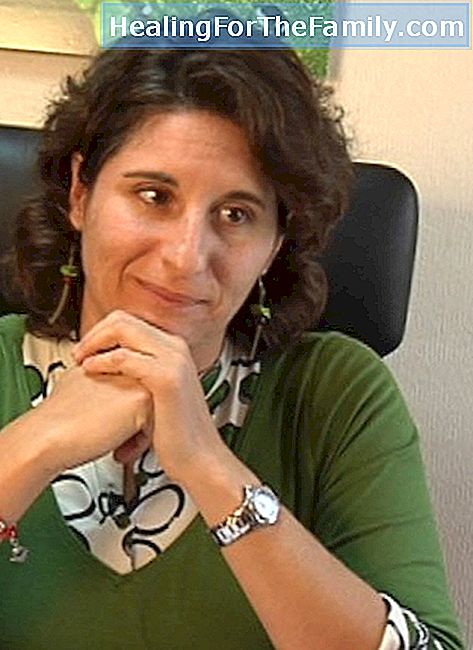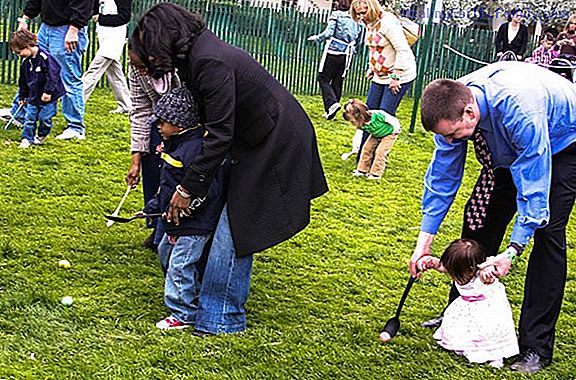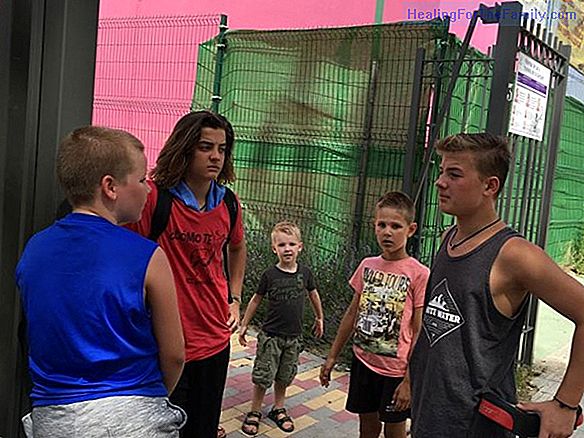Children's questions about sexuality
How do we come to the world? Where do we come from? How do babies get to the belly? Why do not girls have a tail? When I grow up I will marry you, they are some of the questions that children ask when they begin to incorporate the topic of sexuality into their lives. Questions tend to be in ascendin
How do we come to the world? Where do we come from? How do babies get to the belly? Why do not girls have a tail? When I grow up I will marry you, they are some of the questions that children ask when they begin to incorporate the topic of sexuality into their lives.
Questions tend to be in ascending order. The first is usually the simplest and the following questions can already make us 'sweat': how do babies get to the belly? So that parents have an idea of how to respond to this flood of questions, the psychologist Mónica Poblador of the Álava-Reyes Asociados Cabinet offers us some examples of answers in concrete cases, that we can use as a model to educate our sexuality children.
Children's questions about sexuality

What advice would you give to parents who want to talk about sexuality with their children?My first recommendation is to remember the availability for dialogue and naturalness, not to lie, and to call things by their names. And never forget to treat the issues with tenderness, affection, closeness.
Where do the children come from? How do they reach the belly?
When a couple loves they can decide to increase the family. In order for a baby to form in the mother's womb, two cells must be put together, one from the mother called the ovule and the other from the father, the sperm. In order for these reproductive cells to come together, father and mother have to be alone, in intimacy and love each other, and perform intercourse. That is, dad insert the penis in mom's vagina. When a sperm enters the ovum, fertilization takes place (it may sound because of the fertilization of animals, chicks, etc.). The cell of the beginning will be divided into more cells, in two, in four, in many cells, until a baby is formed, which can be a boy or a girl.
How to talk about sex with children?
To talk about sex with the little ones, we can tell them that dad and mom like to be with everyone together, and they also like to have moments to be alone and be very close together. And then say loving words, and laugh, and be naked and caress, and kiss all over your body. This is called 'making love' or 'having sex'. You may also like the two of you, that dad puts his penis in mom's vagina, this is called coitus. But not always that love is made, intercourse takes place. Making love is very beautiful and produces pleasure, but we must wait until we are older so that our bodies of women and men are ready to make love and to see if we really want, and know with whom.
How should parents act in the face of a compromised situation of sex on television?We can explain what we think about it, giving criteria: 'is a scene too strong for your age', 'I do not like the way in which sexual relationships are represented, things do not usually happen that way?', etc. We can give our opinion, naturally and without fear of talking about it, to create opportunities. If the moment is not opportune, we must wait for the film to end, or for the intermediate to arrive, in order to truly share, listen and be heard.
What do we do if we find a pornographic magazine for our 13-year-old son?
First, to say that we feel we have gotten into their privacy, that we have not done it in advance, but we prefer to speak it rather than shut up and interpret it in their own way. And we can also give you our opinion about it, which will depend on the objective that we set. Do we want you not to read this type of material, or do we want you to know that there are different ways of showing sexuality and commenting on how it is shown in pornography so that you can have your own criteria and choose better? According to our objective, so will the message we will give you.
When children catch their parents in a sexual act or watch it on TV, how should parents act?It is important that the couple explain themselves, although the likelihood of seeing them has been little, it is better to run the risk of interpreting it as a situation that was not: something violent, something bad ... what to tell? What we were doing, which does not mean giving all kinds of details: talk about affection, something desired, pleasant, pleasant. If in what happened there was love, affection, commitment, it will be a good time to talk about all these values and associate them with erotic relationships.

When the child sees two women or men kissing ... How to explain homosexuality to children?
When we think of lovers, we usually imagine a man and a woman, but this is not always the case. Some men fall in love and prefer to be with other men and some women fall in love and prefer to be with other women. They are called homosexuals, gays if they are two boys, and lesbians if they are two girls. If it is a couple of men and women, they are called heterosexuals. The important thing is that each person chooses who they like the most and respects the preferences of others.
When the child has two moms or two dads or friends in that situation ... How to explain changes in family models?We must also talk about different family models because children have to know 'that not all families are like mine': they are formed by a couple living alone with their children, or with grandpa, grandma and other relatives, also formed by a single father or mother, because they have never lived together, because one of them has died, or because they have decided to separate, etc. There are also couples formed by two women, or two men who have children.
How should children learn gender differences?Both boys and girls realize that they belong to one sex and not the other. This is the beginning of the process that leads to sexual identity. To feel that you belong to one of the two sexes. eye! Do not confuse with the process of learning or feeling that there are things exclusively of children and others exclusively of girls, which would be gender roles, a social construction that makes some things, games or dresses are considered as belonging to men and others as women's own.
How to differentiate these concepts from sexual orientation?When it comes to educating on equal opportunities and avoiding sexism, which is discrimination based on gender, it is vitally important that adults do not mix these three concepts that are totally different: sexual identity, sexual roles and sexual orientation, to avoid the ghosts that do not allow us to enhance the knowledge and acceptance of the desires and way of being of children, all of them, authentic men and women, different sexualities.
When are they classified among themselves and assume I am a child or am I a girl?Around the age of two, most of them, although they are not able to say it, already self-classify as a boy or a girl. But the curious thing is that this self-classification is not based on what they are, their genitals, but in terms of what they look like. An example: if a 3-year-old child is asked what it is, he will probably answer that he is a child, but if he is asked what it would be if a dress and a wig were put on him, then he is likely to answer that girl. At the end of early childhood, around 6 years old, almost everyone feels something, boy or girl, and they already know how to feel it regardless of their tastes, their games and even their genitals, which does not mean that it is always so simple or that is free of conflicts.
Should we give importance to the choice of their games and toys?
It is not strange that at these ages we are talking about there are boys or girls who prefer games or toys that for many people can be considered as belonging to the other sex. Without this, in addition, supposes any conflict regarding their identity. They know perfectly categorized as a child or as a girl. Conflict or confusion, as we have said, is often on the side of adults, who believe, for example, that if they buy a doll for their child or a ball for their child, they may be contributing to the sexual identity or to promoting homosexual desire orientation. Nothing is further from reality!
Marisol New
Source consulted:the text is taken from"Building Sexualities"(CEAPA, 2008) and other publications ofCarlos de la Cruz. Director Official Master in Sexology UCJC.












